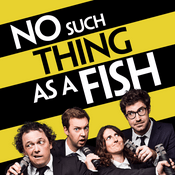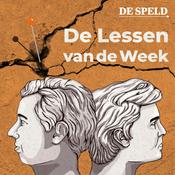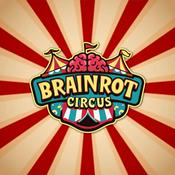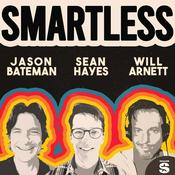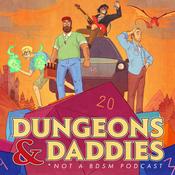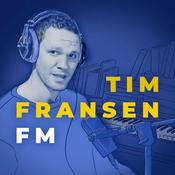UNrattled: A Podcast for Parents
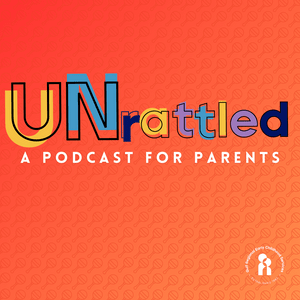
51 afleveringen

Deck the Halls, Ditch the Stress
22-12-2025 | 45 Min.
The holidays are supposed to be magical… but for many parents, they also come with pressure, comparison, guilt, and unrealistic expectations. In this honest and laugh-filled conversation, we unpack the stressors that make this season feel so heavy—gift-giving guilt, family obligations, overstimulated kids, and the myth of the "perfect holiday parent." We explore why the holidays often trigger disappointment and burnout, how to set boundaries with grace, and why your kids don't need a picture-perfect season to feel loved. You'll hear real stories, practical strategies, and gentle reminders that your worth is not measured by matching pajamas or how many family dinners you attend. This episode is a permission slip to slow down, ditch the pressure, and build a holiday that actually feels good for your family. Key Takeaways for Listeners: 1. Presence > Perfection - Your kids will remember how the holidays felt, not how perfect they looked. Emotional connection matters far more than gifts, matching outfits, or elaborate plans. 2. You Don't Have to Do It All - Family expectations, multiple gatherings, big budgets, and nonstop events are optional. You're allowed to create boundaries—and new traditions. 3. Kids Aren't Misbehaving… They're Overwhelmed - Holiday overstimulation is real. Meltdowns are normal, not personal failures. Simple adjustments can make the season easier on everyone. 4. Break Up With the "Shoulds" - Let go of inherited traditions or expectations that no longer fit your family. Choose what brings you peace, not pressure. 5. A Happier Holiday Starts With Realistic Expectations - The most meaningful seasons are built on connection, rest, and joy—not on comparison or obligation.

Regulation Starts with Us! Co-Regulation for Parents & Kids
01-12-2025 | 40 Min.
When our kids are melting down, it can feel impossible to stay calm — but that's exactly when they need our calm the most. In this episode of Unrattled, we sit down with licensed therapist Lauren Poiroux-Harvey from The Sommer House in Mobile to explore the life-changing power of co-regulation — the process of calming our children by calming ourselves. Lauren breaks down what co-regulation really means, why it's essential for healthy brain development, and how parents can begin practicing it (even when they feel completely tapped out). We get real about the hard moments — tantrums in public, multiple kids melting down at once, and what to do when you lose your cool — and offer practical tools you can use right away to create connection instead of chaos. If you've ever wondered how to guide your child through big feelings without losing yourself in the process, this episode will leave you feeling seen, supported, and equipped with tools to bring more calm into your home. Key Takeaways for Listeners: Co-regulation is the foundation of self-regulation — children first learn to calm down by borrowing our calm. Our nervous system matters — kids pick up on our stress just as much as our calm. It's not about being perfect — we all lose our cool sometimes; what matters is repair and reconnection afterward. Staying calm is a skill we can practice — simple grounding strategies (breathing, pausing, lowering our voice) help us regulate in tough moments. Big feelings are opportunities, not threats — co-regulation turns tantrums and meltdowns into teachable moments for connection. Safe exploration of emotions builds resilience — when children see us manage stress, they learn how to manage their own. Small steps add up — even choosing one calming practice to try this week can shift the atmosphere at home or in the classroom.

Do It Scared! Parenting, Purpose, and Pushing Past Self-Doubt
17-11-2025 | 40 Min.
Parenting doesn't come with a manual—or a guarantee that we'll always feel ready for what comes next. In this episode of UNrattled: A Podcast for Parents, we're talking about what it really means to "do it scared." Together, we'll unpack the courage it takes to act even when fear and self-doubt creep in—whether it's going back to school, starting therapy, changing jobs, or simply showing up differently at home. Through personal stories and honest conversation, we explore how parents can stop waiting for perfect timing, learn to trust their own worth, and model bravery for their children in everyday moments. Because courage isn't the absence of fear—it's moving forward in spite of it. Key Takeaways for Listeners: Courage isn't the absence of fear—it's choosing action anyway. Growth begins when we stop waiting to feel ready. Your children learn bravery by watching you try. Modeling imperfection teaches them that fear and failure are part of learning. Self-trust comes before external validation. You don't need permission to believe in your own worth or purpose. Progress over perfection. Taking one small, brave step forward builds momentum and confidence. Fear can be a compass. What scares you most often points toward the next area of growth, healing, or purpose.

Not So Gentle: The Parenting Trend That Lost It's Way
03-11-2025 | 42 Min.
What started as a well-intentioned shift toward empathy and connection has, for many families, turned into confusion, guilt, and unrealistic expectations. In this episode, clinical psychologist and author Dr. Emily Edlynn joins us to unpack the "gentle parenting" trend—and why it may be doing more harm than good. Drawing from her book Autonomy-Supportive Parenting, Dr. Edlynn explains how we can move beyond buzzwords and social media soundbites to embrace a research-backed approach that balances warmth, boundaries, and child independence. If you've ever felt unsure about how to stay kind and in charge as a parent, this episode is for you. Key Takeaways for Listeners: Being a supportive parent doesn't mean being permissive—structure, boundaries, and emotional connection can (and should) coexist. Autonomy-supportive parenting offers a science-backed alternative that promotes healthy independence, emotional regulation, and mutual respect between parent and child. Social media often simplifies or distorts complex parenting ideas, so it's important to look beyond influencer advice and turn to evidence-based guidance. Parents deserve grace, realistic expectations, and flexible strategies that support both their children's development and their own well-being.

More Than Survival: Small Steps Toward Financial Peace
20-10-2025 | 49 Min.
For many families, thinking about financial planning can feel like a luxury—especially when every dollar is already accounted for and daily survival takes center stage. In this episode, we take a realistic look at how small, intentional steps can lead to greater peace of mind, especially in tough economic times. We're not talking spreadsheets or lectures—we're talking about mindset, habits, and legacy. Whether you're living paycheck to paycheck or trying to shift generational patterns, this episode will meet you where you are and offer supportive tools for planning your family's future… one step at a time. Key Takeaways for Listeners: You don't have to be "ready" to start. - Financial peace doesn't begin with perfection—it begins with one small, intentional step toward stability or clarity. Survival mode is real—and so is your power to plan. - Even when times are hard, taking small actions today can ease stress tomorrow and create a greater sense of control. Your relationship with money was shaped long before today. - Recognizing where your money mindset comes from can help you shift harmful patterns and create new ones for your family. Teaching your kids about money starts with what they see. - Everyday moments—like grocery shopping, saving change, or talking about needs vs. wants—lay the foundation for lifelong financial habits. Planning ahead is an act of love. - Whether it's choosing a trusted guardian, setting aside a few dollars, or just dreaming about what's possible—your effort today is a gift to your future self and your children.
Meer Komedie podcasts
Trending Komedie -podcasts
Over UNrattled: A Podcast for Parents
Luister naar UNrattled: A Podcast for Parents, No Such Thing As A Fish en vele andere podcasts van over de hele wereld met de radio.net-app

Ontvang de gratis radio.net app
- Zenders en podcasts om te bookmarken
- Streamen via Wi-Fi of Bluetooth
- Ondersteunt Carplay & Android Auto
- Veel andere app-functies
Ontvang de gratis radio.net app
- Zenders en podcasts om te bookmarken
- Streamen via Wi-Fi of Bluetooth
- Ondersteunt Carplay & Android Auto
- Veel andere app-functies


UNrattled: A Podcast for Parents
download de app,
luisteren.
